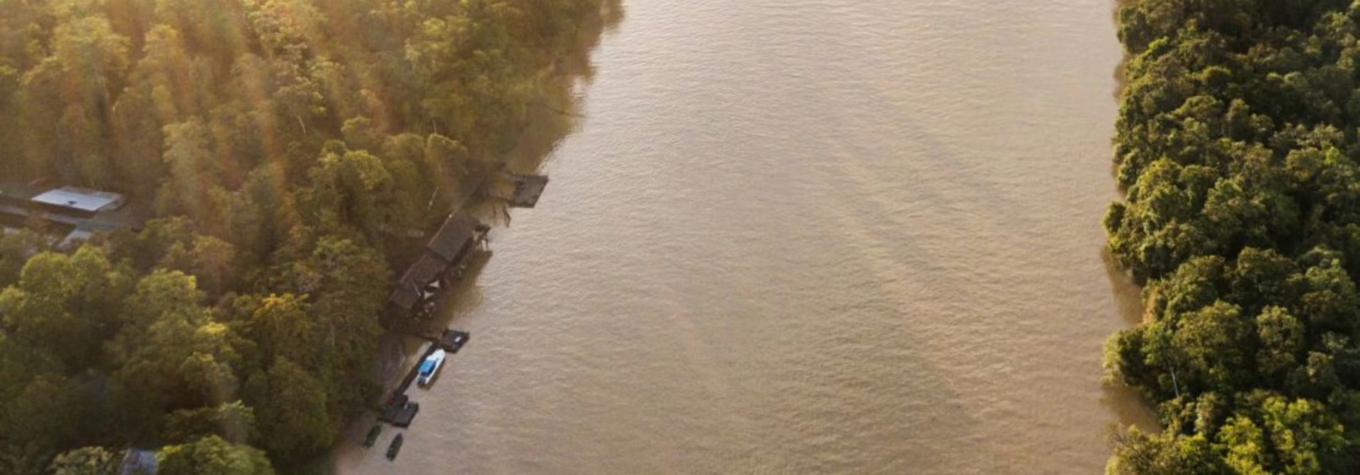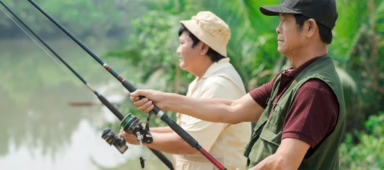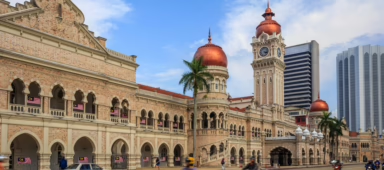Raw, wild nature and luxury ecotourism go hand in hand along the Kinabatangan Corridor of Life, where both animals and humans can find sanctuary
The Kinabatangan River is busy today.
There’s a group of potbellied proboscis monkeys playing in the mangroves that overhang the riverbank, and I’m busy snapping photos from our small motorboat when I hear our guide, Jamil Lumayan, calmly remind us to keep our hands inside the boat. There is a collective intake of breath as the powerful shoulders of a five-metre-long saltwater crocodile emerge from the murky water, just out of arm’s reach.
“Don’t worry,” Jamil says, perched at the helm, binoculars in hand, “in this part of Borneo, the crocodiles only eat fish and sometimes an unlucky monkey, if one happens to fall into the river.” Thank goodness for that.
The croc swims idly beside the boat for several minutes, one amber eye peering at us with interest, before turning off to explore an estuary. Relieved, we turn our attention back to the proboscis monkeys. Endemic to the island of Borneo, meaning this is the only place in the world where you’ll find them in the wild, these strange and, frankly, ridiculous-looking creatures with cartoonishly long noses are undeniably one of Kinabatangan’s star attractions. Despite being endangered, they’re found in abundance here on the riverside.

As we cruise back to our lodge, Jamil explains the complex social hierarchy of proboscis colonies while casually indicating left and right towards silver-and-red langur monkeys, colourful stork-billed kingfishers and pygmy squirrels, smaller than mice. His ability to spot the tiniest of creatures is remarkable, but even more remarkable is the abundance, variety and proximity of the wildlife around us. As our first guided river excursion comes to an end, I’m beginning to understand why ecotourism is thriving in this pocket of Sabah.
Man of the Forest
When we arrive back at Sukau Rainforest Lodge, a luxurious riverside eco-retreat two and a half hours away by boat from the city of Sandakan, staff hurry our small group to the other end of the jetty to see two adult orangutans lounging in the treetops. These fully wild apes, long-limbed and languid yet agile, are well-known to the lodge and regularly appear in the trees nearby to eat fruit. Named Lucky and Day, their deep-set, soulful eyes are clearly visible through binoculars.
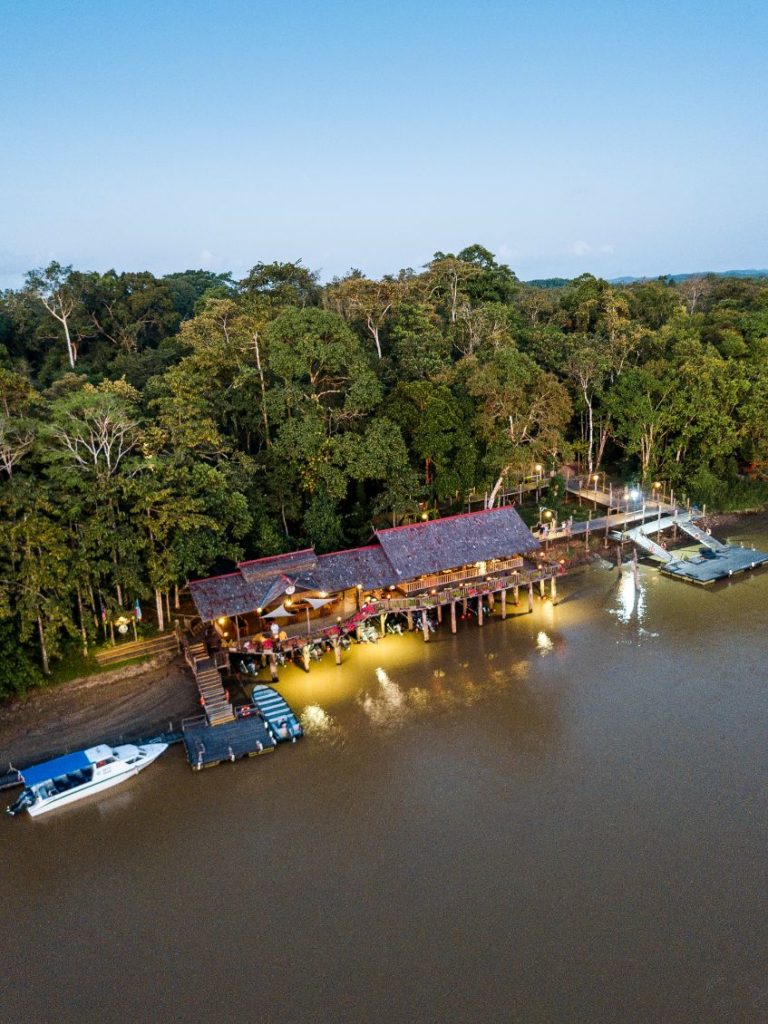
Alongside proboscis monkeys, crocodiles, hornbills and pygmy elephants, endangered orangutans (“orang hutan” means “man of the forest” in Malay) make up Borneo’s “Big Five”, a set of animals eagerly sought out by the four million birdwatchers, photographers, nature lovers and adventure seekers who flock to Sabah every year. Tourism here is at an all-time high, thanks to an increasing number of international and domestic flights, making it the second-largest income contributor in the state, after agriculture.
“There are only 11,000 orangutans left in Sabah, mostly because of habitat loss, and they’re shy, solitary animals, so [they] can be hard to find,” says Suhailie Kahar, the lodge’s resident naturalist.
“But Kinabatangan is one of the best places to see them in their natural habitat because they have lots of food and the tourism industry here, which is predominantly ecotourism, respects their need for space.”

Born and raised in the nearby village of Sukau, Suhailie is an Orang Sungai (an indigenous people of Sabah who live by rivers) and an expert in the natural history of the area. He has been working as a naturalist on the lower Kinabatangan River for 18 years and, in that time, has witnessed huge changes.
“Of course, there used to be many more orangutans in the trees, but also fruit bats in their thousands, gibbons howling in the morning and huge sawfish, six feet long, in the rivers,” he says. “Elephants used to be much easier to find along the riverbanks but, as the forest became fragmented, their numbers declined.” The changes clearly make him wistful for what has passed but, Suhailie says, Kinabatangan’s guardians must look forward, not back, and find conservation solutions that work in the present.

Growth of ecotourism in Sabah
Upstream from Sukau, in the village of Bilit, Alex Yee has operated an eco-retreat, Nature Lodge Kinabatangan, for the past 15 years. An avid conservationist, he also founded and manages a sea turtle hatchery on nearby Libaran Island, where tourists can enjoy low-impact luxury camping while learning about endangered green and hawksbill turtles.
Alex is also president of the Kinabatangan – Corridor of Life Tourism Operators Association, an organisation that promotes sustainable practices among the area’s tourism businesses, and says Malaysia’s ecotourism industry is “young but promising”.
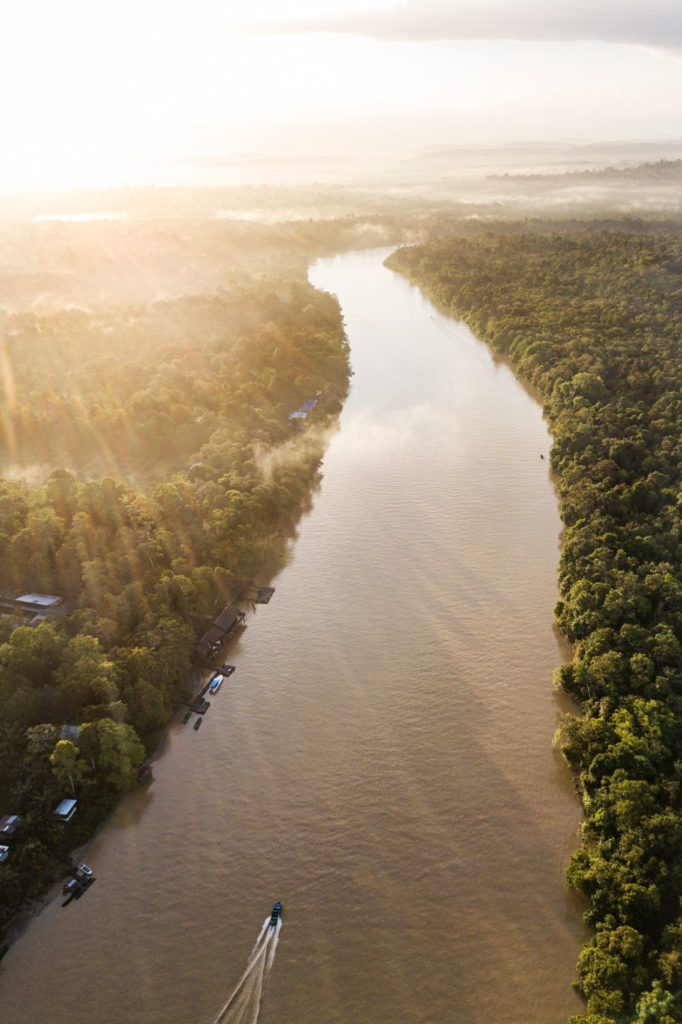
“Malaysia is blessed with a wide variety of ecosystems, and is home to a majority stake of the earth’s species and a large number of endemic species, which means ecotourism works extremely well here,” he says. “The majority of our travellers, especially those from overseas, are seeking authentic experiences and life-changing adventures. They understand that this is not a zoo and they embrace the wild and unpredictable side of what we have to offer. They are also increasingly aware of their ecological footprint.”
Cave colonies
Later that afternoon, eager to experience more of Kinabatangan’s incredible natural ecosystem, we venture beyond the river to the hinterland, with a boat ride and hike through the jungle to Gomantong Cave. The largest cave system in Sabah, Gomantong is home to enormous colonies of swiftlets and bats. The cave itself is breathtaking for two reasons: Firstly, because the main limestone chamber stretches to a height of 90 metres – to where sunlight streams through a natural skylight – and, secondly, because of the stench of bird excrement, or guano, which is packed several feet deep on the ground.
“There are two million swiftlets and three million bats inside this cave,” says our guide, Jumaidi bin Amil Hassan, as we don masks to enter the main limestone cavern. “Both are outnumbered only by the cockroaches,” he adds.
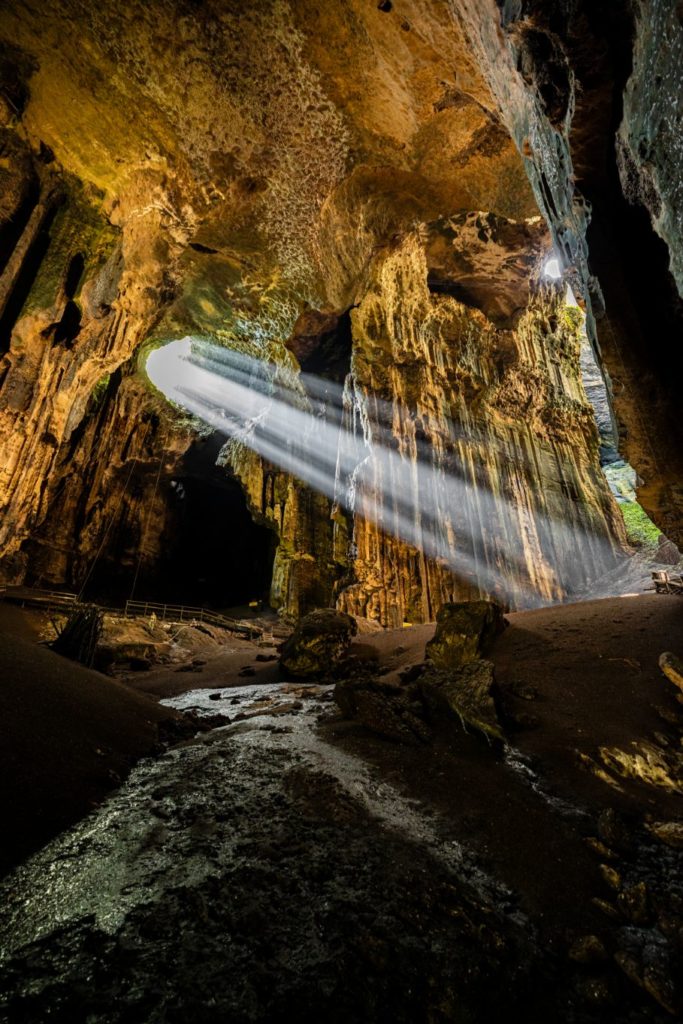
At the mouth of the cave, bamboo equipment from the twice-yearly bird’s nest harvest hangs on the walls. Deeper inside the cavern, roaches scuttle in all directions and wrinkled-lipped bats hang like plump fruit on every surface.
Every evening at dusk, the bats pour out through the skylight in a mass exodus to the surrounding jungle to feed on insects, while bat hawks and crested serpent eagles circle above, waiting for their own feeding frenzy. Once outside the cave, the bats swarm together, filling the sky with vast dancing clusters, swooping in one direction then another in a mesmerising theatrical display.
“You won’t see this in a zoo,” says Jumaidi, his head tilted back. And he’s right.
The magnitude of what we’re watching would never fit inside an enclosure, which is what makes a place like Kinabatangan, where nature and habitat are limitless, so magical.
Birds of paradise
At 5.30am the next day, when there’s just enough light to reveal the silhouette of the rainforest canopy, our boat pulls silently away from the dock for one last adventure. Early morning, we are assured, is the best time to witness the full spectrum of birdlife – more than 200 species – that Kinabatangan has to offer.
Within minutes, we are looking up at a pair of huge rhinoceros hornbills that dominate the upper reaches of the trees-cape with their trademark golden casques. Several of the eight hornbill species found here are endangered, in part because of the illegal wildlife trade, although this one is considered under threat but not yet endangered. “These birds mate in monogamous pairs for life,” says Jamil, “with the male pro-viding all the food for the female and the young.”

Jamil points to a purple heron on a neighbouring tree and then a cattle egret, which soars overhead before landing near a pair of oriental pied hornbills, who respond with a loud cackle. Beneath them, on the lower branches of the mangrove, is a rainbow display of black-and-red broadbills, a yellow-bellied bee-eater and a tiny blue-eared kingfisher.
This story originally appeared in the Spring 2020 issue of Going Places magazine.
